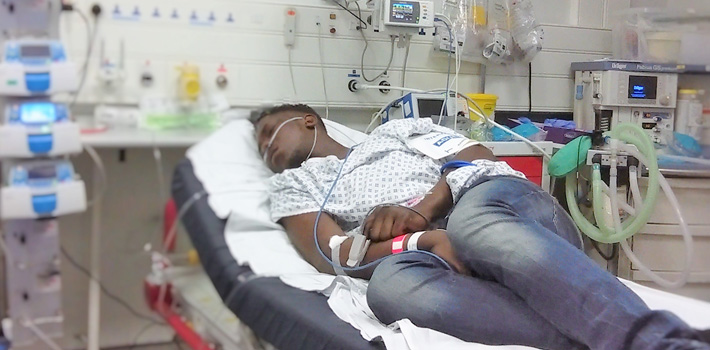
Carol and Daniels Story
I have always known about the existence of sickle cell. I did some of my secondary school in Nigeria and when I was about 14/15 years old, a classmate of mine died from Sickle cell anaemia and we were made to go and pay our respect in the morgue.
Seeing her laid out cold in the morgue on a slab was an experience I will never forget. It has always remained with me and as chilling as it sounds it’s a reality but I never thought about finding out if I am a carrier of the gene, even after losing 2 cousins to Sickle cell anaemia.
Now I know that knowing your Genotype in early life is important!
There needs to be early education for young black people to be given an education and advice strongly to know their Genotype.
In everything God has been gracious and he’s giving me the stamina and the strength to look after my son, my niece and nephew who live with the condition.
Here is also an insight into why young people need to know their Genotype. Sickle cell can cause stroke in children and young people. This is very true.
I am mum to Daniel (19 years) who has Sickle cell anaemia and has had the main 2 types of stroke Ischemia and haemorrhagic. In total Daniel has had over 5 major strokes, many mini strokes and lots of other complications from childhood stroke.

Daniel had his first stroke at 6 years old and I can tell you it was the worst day of my life, I really hate to recount that morning, it was a terrible terrible day.
The Stroke signs were all there but I did not know what they were. #FAST. His whole side was paralysed, he had a wonky smile and he was as cheeky as ever, I gave him a bath, fed him then called a taxi not an ambulance to take us to the hospital.
Let’s just say that in hindsight, I did all the wrong things that you would do to someone who has just had a stroke let alone a 6-year-old child.
On reaching the hospital it was confirmed that it was a stroke and that when our Stroke journey began. He was rushed to intensive care where a Blood laborious blood exchange was done almost immediately. Looking after a child with sickle cell is not the easiest of thing to do but with stroke thrown into the mix it is a recipe for disaster but you learn from your mistakes along the way.
I had to find my own way of coping, caring and managing his care from personal research and information sourced from Doctor, conferences and the internet.
Daniel was in the hospital for about a month as he had to learn how to walk as my house had a lot of stairs, his gait was wide because he had foot drop and his elbow would automatically pop up (the number of times he elbowed people was too many).
Daniel has always been a fighter; before his first stroke we were in and out of hospital every 4 to 6 weeks with one complication or another, I even had a bag packed just in case as most of his painful episode started after midnight.
Before the age of 6, he had already had 4 operations and countless hospital admissions.
In 2007, Daniel had one of the worst strokes ever, he had a bleed in the brain! He has Moyamoya syndrome from the extensive narrowing of the blood vessels in his brain and one of the minute blood vessels that he sprouts to bypass blockages burst!
This started as headaches (this time I knew what to look out for) that would not be relieved by painkillers so I rushed him to hospital. He was immediately admitted and he fell into a coma for 3 days.
There is so much more that happened that I would like to share and you can reach me through the charity. You can email me at Carolossai@scyss.org.

